- Home
- slideshows
- miscellaneous
- Nike's controversial Vaporfly shoes powered the world's 2 fastest marathoners to victory. When I tried them, it felt like running on rocking horses.
Nike's controversial Vaporfly shoes powered the world's 2 fastest marathoners to victory. When I tried them, it felt like running on rocking horses.
I've been covering the science of Vaporflys since October, when Eliud Kipchoge broke the 2-hour-marathon mark wearing a Vaporfly prototype.

When I opened the box, I was met by a blast of hot pink.
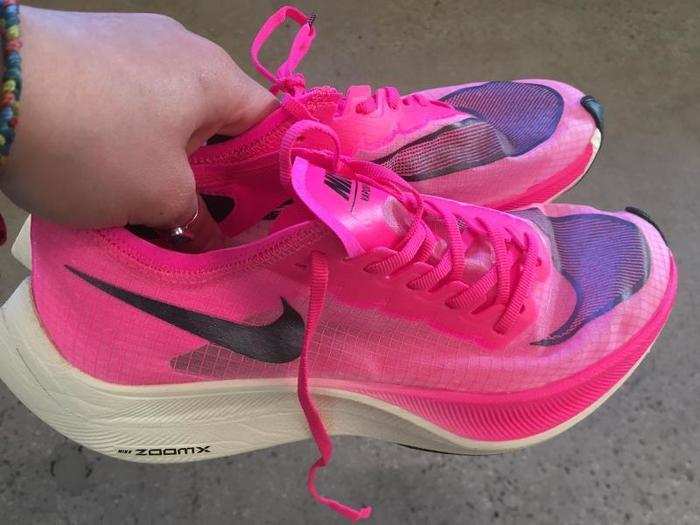
The $250 shoes come in a rainbow of neon hues, including orange and lime.
The shoe's shape looked like a tapered spearhead.
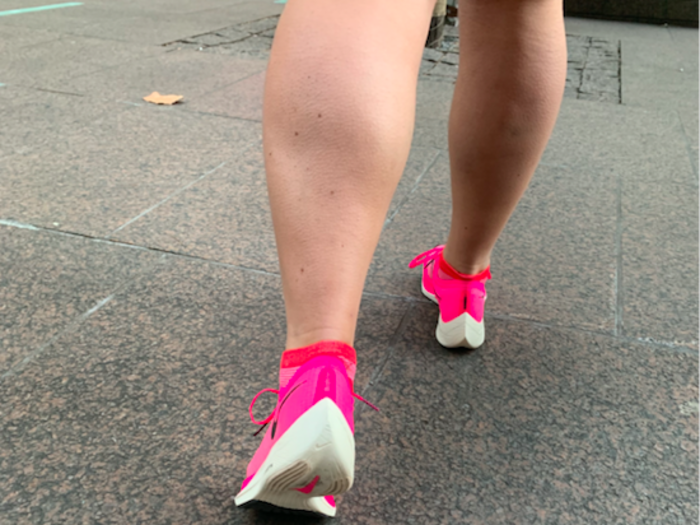
Less than 4 inches at its widest point, the Next% has the most razor-like heel I'd ever seen. It looked almost like you could shave with the edge.
It seemed like the shoe was missing a giant chunk on the inside, between the toe box and squishy foam heel.
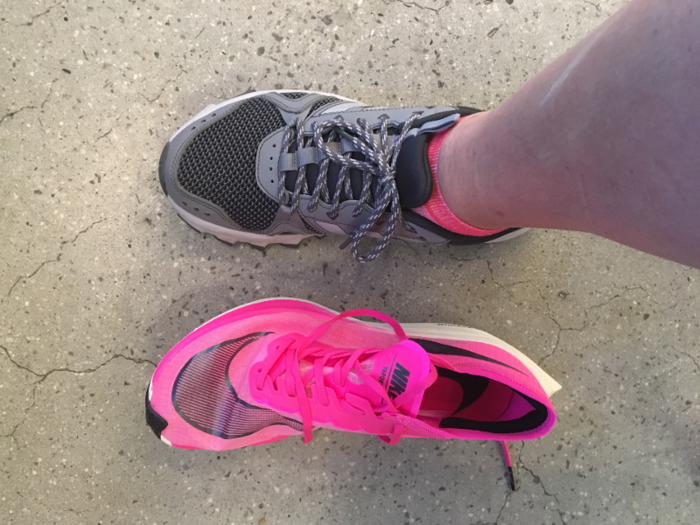
Most shoes, like my Adidas ones, have a more rectangular, boxy profile. These Nikes looked more like a lop-sided hourglass.
One Vaporfly shoe weighs less than half a pound. The laces draw a diagonal line from the shoe's tongue towards the spot where my pinky toe goes. That's to alleviate pressure on top of my foot, according to Stephanie Pellitteri, Nike's regional communications manager.
The shoe's material is almost paper thin. It's made of a water-wicking fabric called Vaporweave.
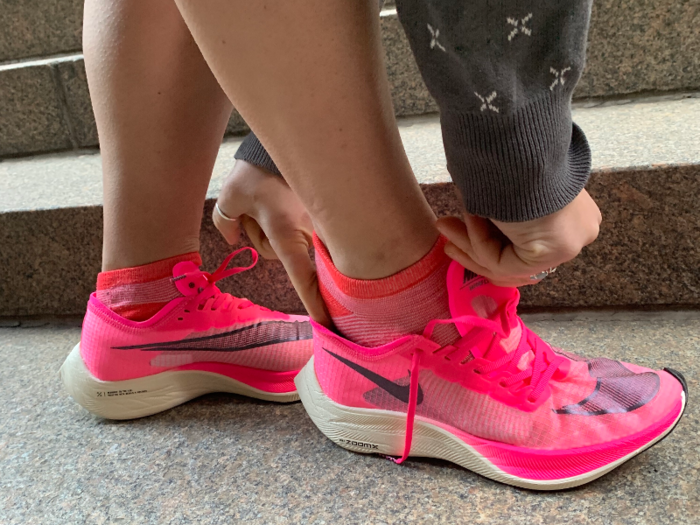
When I stuck my feet inside, I could still see the color of my striped socks.
It was challenging to get them on. But once my feet were in, they fit like a glove.
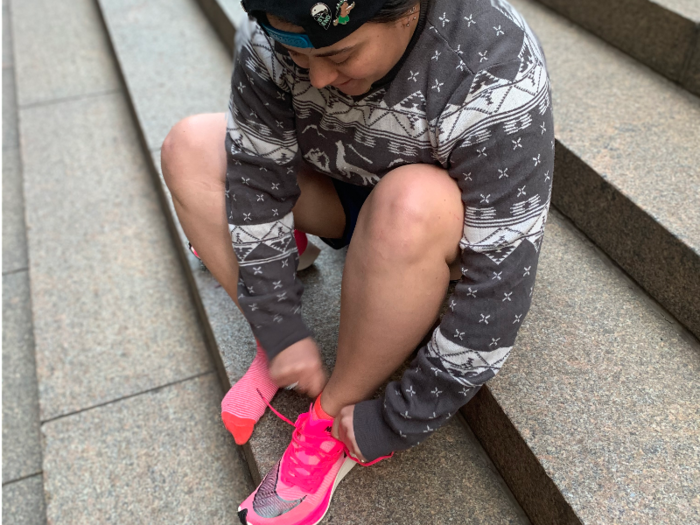
The shoes have a cotton heel grip to protect the Achilles tendon from rubbing on the back of the shoe.
Running in the shoes felt like floating. I could barely feel the ground beneath my feet. With a slight shift of my weight forward, off I went.
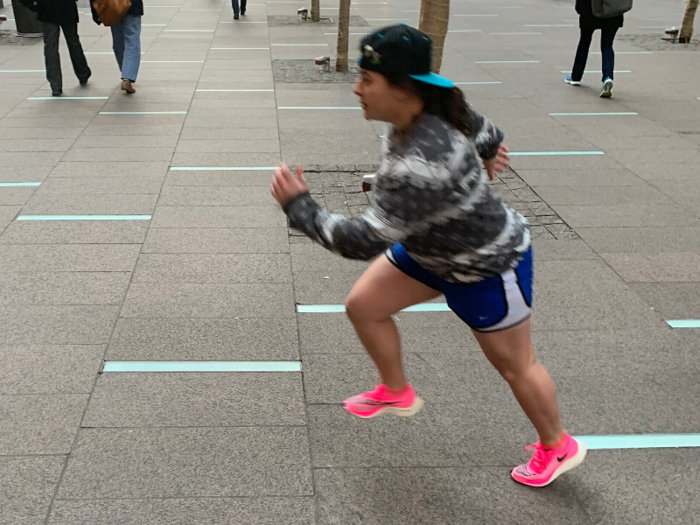
The shoes felt like they almost wanted to move forward on their own.
It felt like I was wearing a pair of rocking horses, and those rocking horses were supported by an army of mini Pogo-sticks.
The key to the Vaporfly design is a carbon-fiber plate in the sole that's curved under the front of the shoe, according to Kyle Barnes, a movement scientist who wrote a study about Vaporflys.
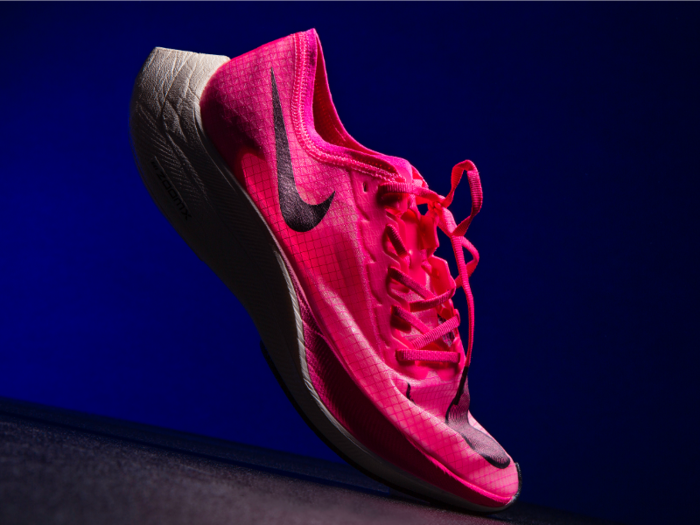
That curvature, Barnes previously told me, helps quickly rock a runner from their heels to their toes as they land and push off again.
Vaporflys also use a new type of foam called Pebax, which is about 87% efficient in terms of energy return. The ethylene vinyl-acetate foam in most traditional running shoes, by contrast, returns about 65% of the energy you put into it, according to Geoff Burns, a kinesiology researcher and pro runner.
When I got on the treadmill at Nike's headquarters, I initially started jogging.
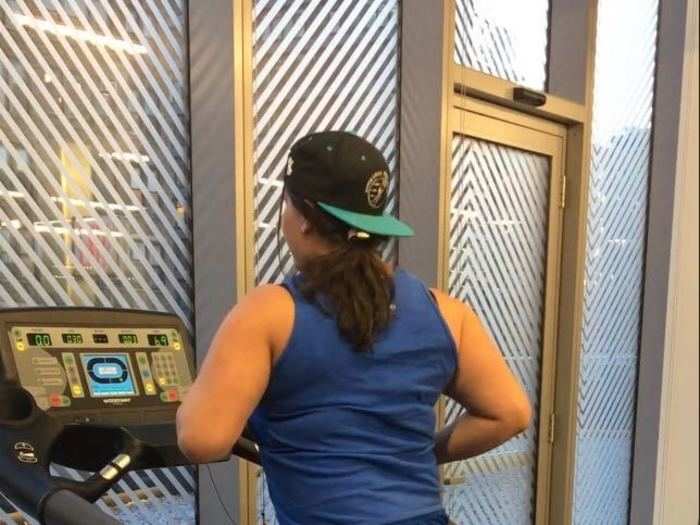
Trotting at a 6.9 mph pace — that's an 8.5 minute mile — felt too easy.
So I upped the speed another 2 mph, which put my mile time around 6:40. I started to breathe heavily, but was not pushing as hard as I otherwise would have to for that quick pace. The shoe was doing more of the work for me.
"The runner runs the race, but the shoe enables him or her to run it faster for the same effort or ability," Burns said. "So for two athletes of equal ability on race day, the one with the shoes is going to beat the one without the shoes."
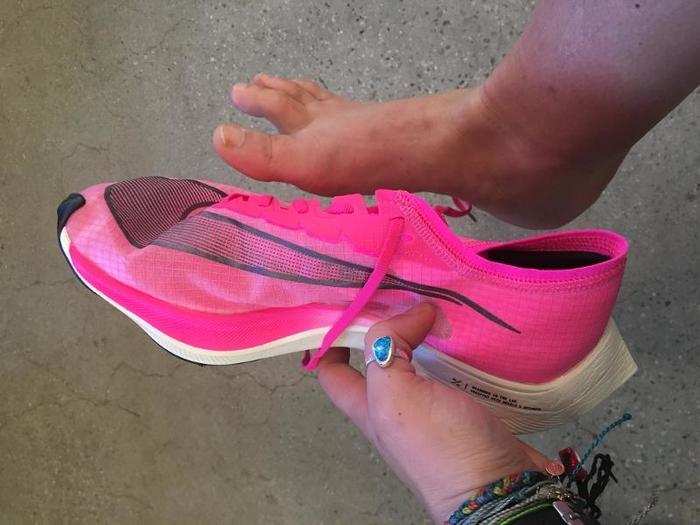
Nike calls the Vaporfly's carbon fiber-foam sole "a built-in secret weapon," since it's designed to help runners get the most forward push for each stride.
In a study done independently of Nike, Barnes found that Vaporfly shoes improved an athlete's running economy by 4.2% compared to the Adidas Adizero Adios 3 shoes.
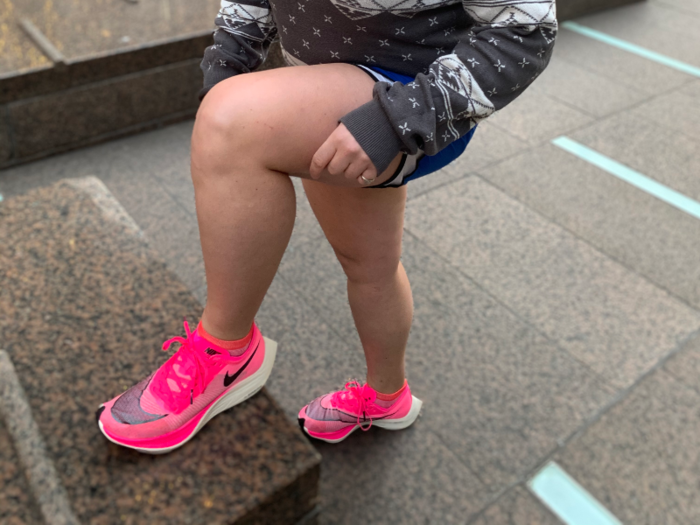
In addition to protecting our legs from the impact of striking the ground, running shoes store and release energy to propel us forward. The midsole acts like a spring, compressing when a runner lands, storing the energy from that foot strike, and expanding again to return that stored energy into the ground to push them forward.
Not all of that stored energy gets returned with each footfall, though — some dissipates as heat. The Vaporfly's design minimizes that lost energy, giving runners more bang for the buck.
A 4% advantage might not sound huge, but there are a lot of steps in 26.2 miles.
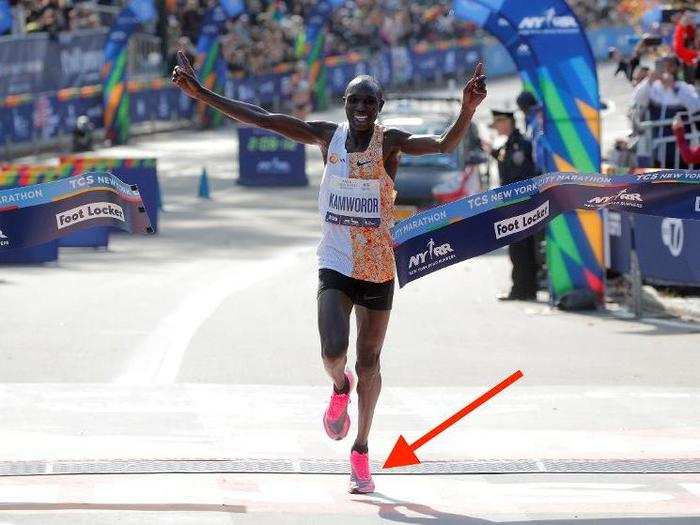
"As soon as you put the shoes on, you have this 'Aha!' moment in which you know these are different than anything you've put on before," Barnes said. "I have several pairs."
Nike launched the original version of the Vaporfly, called the 4%, in 2016. Kipchoge wore them when he won gold in the men's marathon at the Rio Olympics that year.
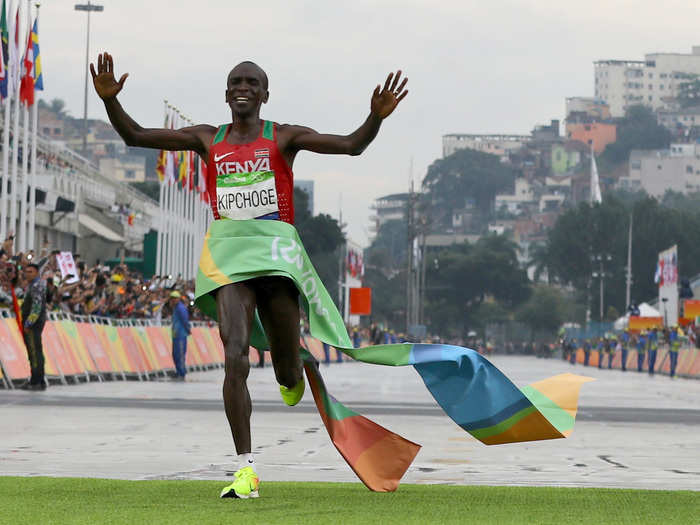
In newer versions, Nike has continued to improving on its design. The company's design team added 15% more foam to the Next% sole, and even more to its successor, a shoe called the AlphaFly that's not yet commercially available.
Kipchoge used an AlphaFly prototype to break the 2-hour marathon mark.
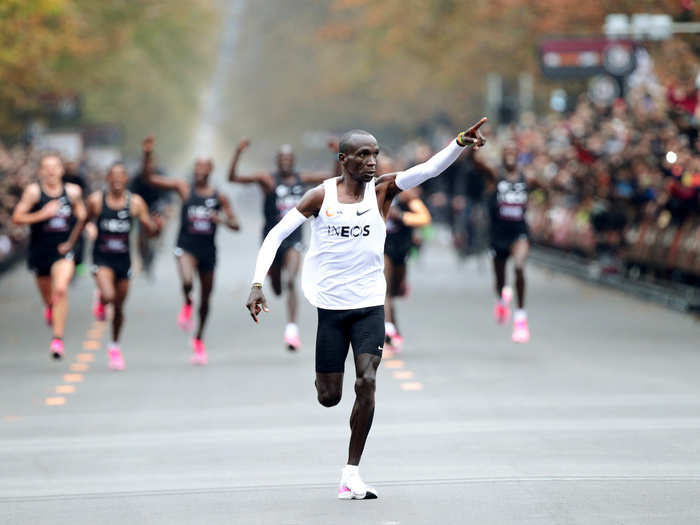
The final version of the AlphaFly shoe could have a sole that includes four fluid-filled chambers that compress on impact.
But Kipchoge may not be able to wear Alphaflys (or Vaporflys, for that matter) when he competes in this summer's Olympic games in Tokyo.
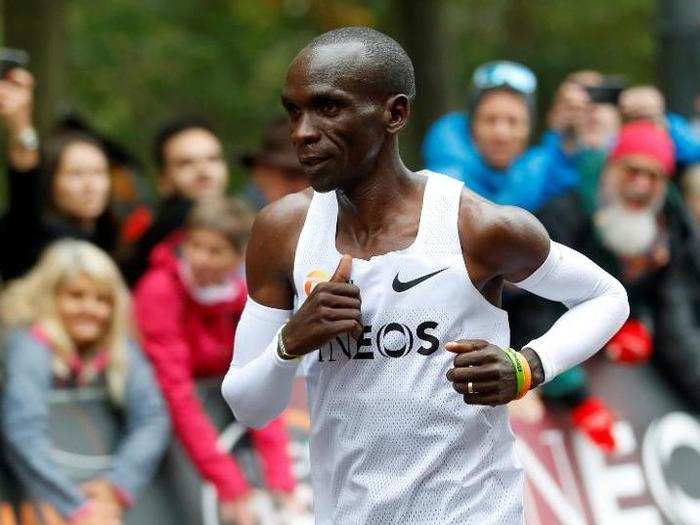
In fall 2019, World Athletics — which oversees most international track events — formed a working group to look into Vaporfly technology. The goal is to determine whether the shoes confer an unfair advantage; a decision about whether or not the organization will ban or regulate Nike's tech could come within weeks.
"We hope to be able to make an announcement at the end of this month," Nicole Jefferies, head of communications for World Athletics, told me on Thursday.
Personally, after wearing the Vaporflys, I'll never be able to look at other running shoes the same way.
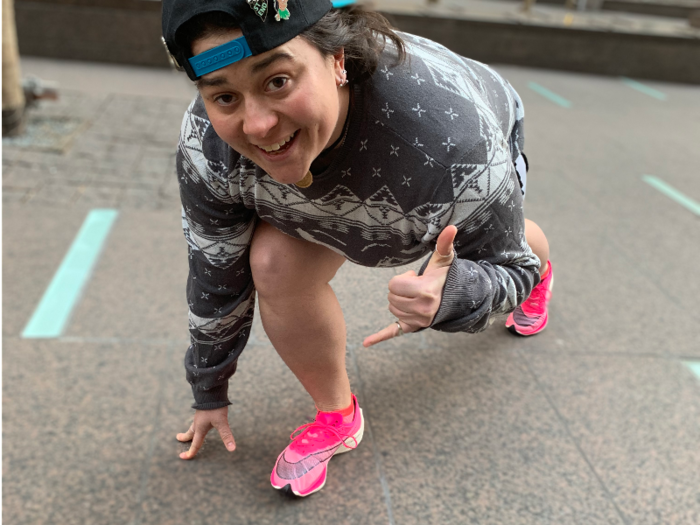
A day of using them around Manhattan made it was obvious, even to me, why elite runners like Kipchoge will always prefer these shoes.
Popular Right Now
Popular Keywords
Advertisement